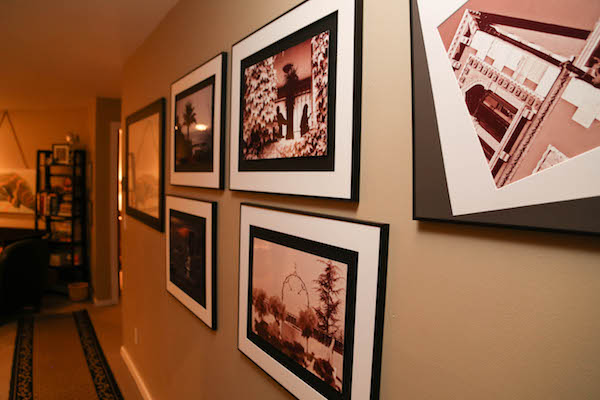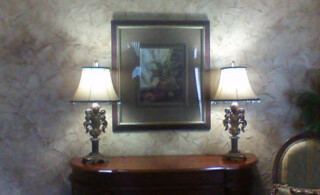
Many people’s first experience with wall art is a photograph or poster. Pictures and posters require little more than a pushpin to put up, no matter how “heavy” they are. As we get older, though, our tastes tend to swing toward wall art that is more substantial (if not in meaning, at the very least in mass). Proper mounting of a painting or wall sculpture ensures its stability, and will optimize its appearance in the room.
Can I Mount Wall Art Myself?
Absolutely! Hanging wall art is not always as simple as putting a nail in a wall and suspending the piece from a wire. At the same time, most of the hardware, tools, and concepts involved in professional looking installation are not difficult to use or figure out.
Ready to start your Wall Mounting Project?
Find ProsReturn to Top
Hanging Large Paintings
Mounting any small piece of wall art is a relatively easy task. Many small paintings and wall sculptures come complete with the necessary hardware; all you have to do is find one or two studs in your wall. Large paintings, however, can weigh over 100 pounds, which is more than many plasma TVs; it would be foolish to hang either with a simple nail and wire.
No matter what kind of wall art you are going to mount, it is important to be able to find the studs in your wall. Now, the “tap and listen” method can be used, but if you’re planning on hanging multiple items (or don’t want any extra holes in your wall), stud finders start at about $20. Heavy paintings should be hung on multiple hooks anchored in multiple studs. Use a level to mark where hooks should go, but make sure to step back and see how it looks, too. The line made where ceiling and wall meet are often not as straight as you think; if this is the case, a perfectly level hook line might actually look awkward.
Purchase your mounting hardware from a specialty shop. They will have a better selection, and will also be able to help with any questions you might have. One thing that many collectors worry about with wall art is its security. A specialty store can provide you with hardware designed to lock your painting to the wall (a technique commonly used with hotel art).
Rail Molding
In homes where many pictures are to be hung, or the pictures will be moved often, rail molding should be considered. Rails are usually installed between six and twelve inches from the ceiling, though atypically high or low ceilings will change that distance. Once the rails are in place, your wall art can be moved easily within the room. Additional pieces can be hung simply by adding more hooks.
Mounting Metal Wall Art
Metal wall art is often extremely heavy. It’s a good idea to purchase hardware that is rated for twice the weight of the piece, especially if it is in a position where it might be bumped into (it sounds silly, but it happens).
Metal wall art can be made even more stable by hanging it in a hard surface wall made of stone, brick or concrete. This will require special hardware and some fancy drilling, but the effect created by juxtaposing metal and rock is often quite appealing, in addition to being structurally sound.
There are certain surfaces that are very difficult to mount anything on. The DIY should call a professional if a piece is to be mounted on glass, mirror, or marble, as they all crack if not drilled properly. This will not only ruin a wall, but in some cases can lead to seven years of bad luck.
Ready to start your Wall Mounting Project?
Find ProsReturn to Top
 3 Simple Ways to Transform a Room on a Budget
3 Simple Ways to Transform a Room on a Budget  Add Custom Beauty to Your Home with Blown Glass
Add Custom Beauty to Your Home with Blown Glass  Why Make Walls Permanent? Build with a Demountable Wall System
Why Make Walls Permanent? Build with a Demountable Wall System  Creative Living Room Design Can Reinvent a Space
Creative Living Room Design Can Reinvent a Space  The Dish on Dining Room Decorating
The Dish on Dining Room Decorating 

Are You Familiar With This Topic? Share Your Experience.